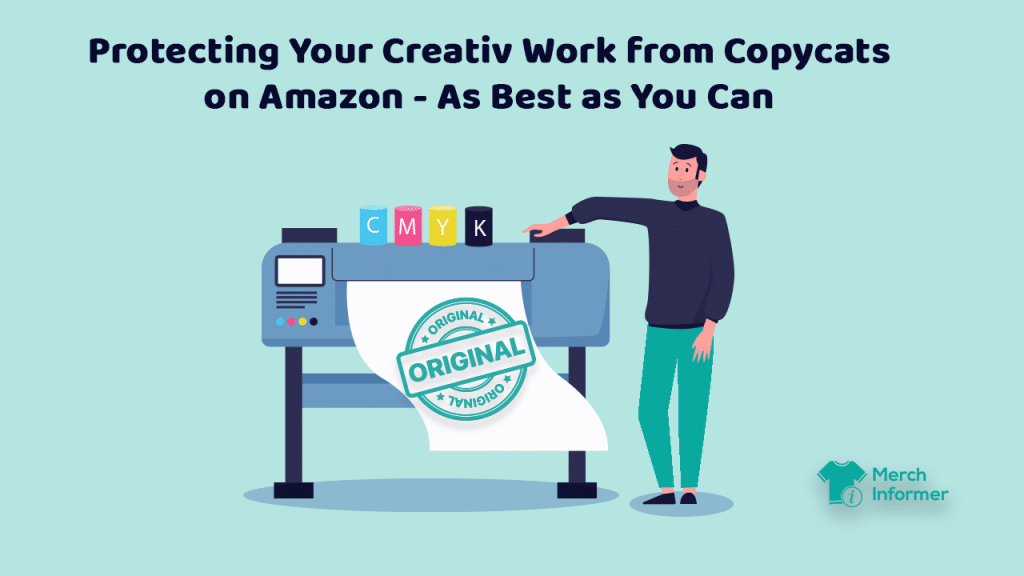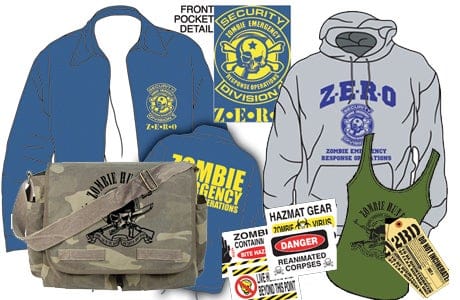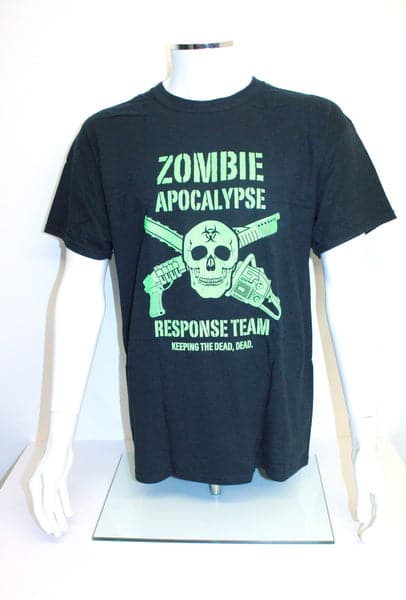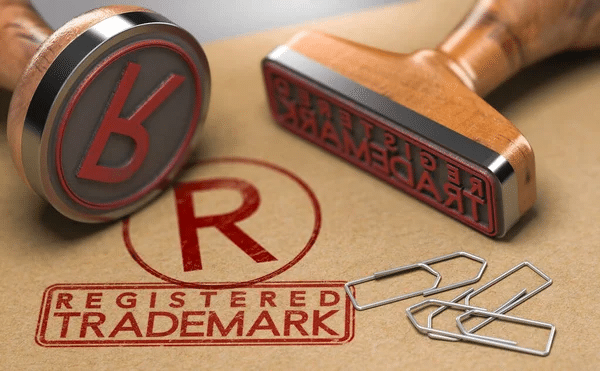Protecting Your Creative Work from Copycats on Amazon – As Best as You Can
In the vast and competitive realm of Amazon, where over 200,000 new sellers joined the platform in 2020 alone, safeguarding your intellectual property is paramount. Copycatting is a pervasive challenge that can result in lost sales, diminished customer trust, and even the blame for poor product quality.
This is a personal one for me.
In the early 2000s, I created the first military-style “Zombie Hunter” t-shirt. This was a labor of love because I always loved what was, at the time, an ignored sub-genre of horror movies. Having been a veteran of licensed gear, specifically of “Star Trek”, I decided to create a fictional zombie-hunting organization called the Zombie Emergency Response Operations, or Z.E.R.O.
Before that, I created was a gimmicky “kit” which was basically designed a a stoner dorm-room decorating kit, with realistic looking warning signs, stickers, yellow hazard tape custom-printed with “CAUTION: ZOMBIE OUTBREAK”, a workplace health-hazard sign, etc. Sold over 60,000 consistently over the course of several years, especially as “The Walking Dead” became popular.
So I created a shirt for the fictional organization, based on an old patch I saw for a special branch of Vietnam Special Operations commandos. The patch bore a skull wearing a beret, and it had the aggressive slogan “Kill ‘Em All, Let God Sort ‘Em Out”. I kept the skull and beret, backed it up with a hand-drawn graphic of a rifle and a machete, and the slogan “Shoot ‘Em In The Head And They’ll Stay Dead”.

LEFT: Original Vietnam-era patch RIGHT: The entire zombie merch line I created
Again, as zombies rose in popularity in the early ‘aughts, my merch was making, um, a killing.
Then the copycats took over. Similar designs, even one that blatantly used my exact graphics, could be found in shops all over the place. Even the workplace safety sign I made was turned into posters, mousepads, shirts, and even rolling trays.
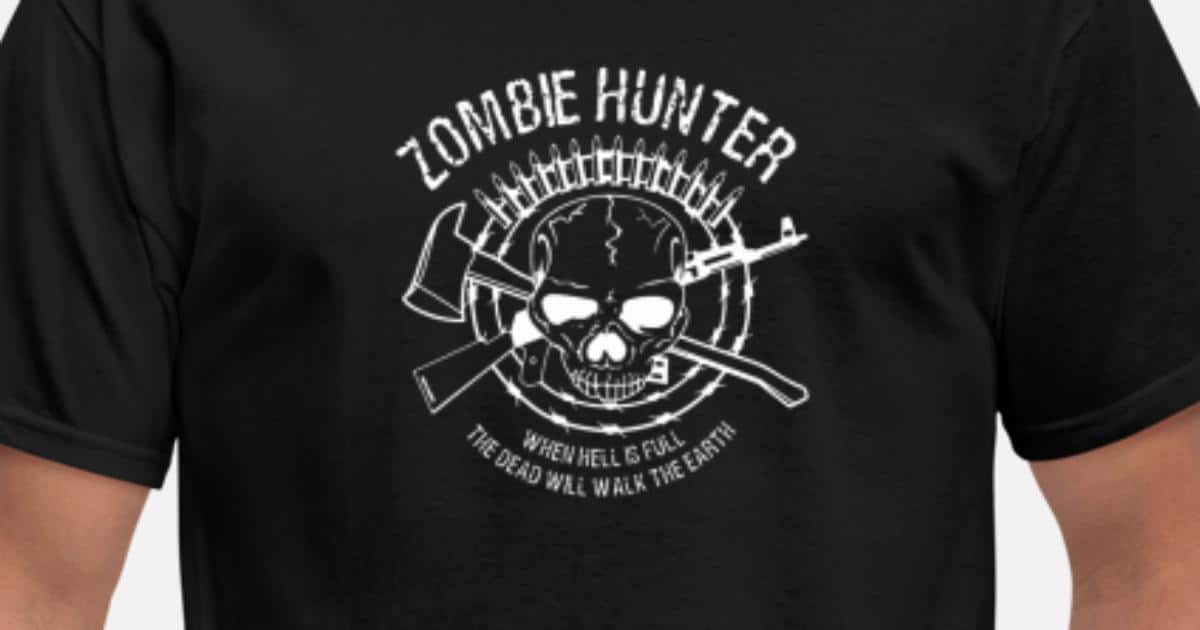
Just a few of the copycats who still survive to this day
I tried to chase down the culprits and appealed to the platforms that sold them, but as brilliant and innovative as my ideas were, they were not for a licensed property, not a proprietary character (no, I didn’t invent the “zombie”), and it was itself a parody of something else.
After watching this go on for years, eventually the zombie craze fell off a cliff, and I was able to write it off as “imitation is the highest form of flattery.”
That said, you can be smarter about this than I was. Here’s how to prevent someone from flattering you all the way to their bank:
Trademark Your Design
One proactive step to guard against copycats is to trademark your design. While this can be costly, it provides essential protection for your intellectual property. A growing number of Amazon sellers have experienced the frustration of competitors frivolously registering trademarks to remove their designs from the platform. This issue primarily concerns the United States Patent and Trademark Office (USPTO), which safeguards businesses’ intellectual property rights.
Merch by Amazon takes trademark registrations seriously, often siding with the trademark owner. Unfortunately, even everyday phrases are now being trademarked, negatively affecting the sales of independent sellers. To mitigate this, vigilance is key. Monitoring for copycat designs and filing copyright/trademark claims when necessary can help protect your work. Tools like MerchInformer’s trademark search tool can assist in tracking trademarks associated with your designs.
Amazon’s Protection Measures
Amazon recognizes the need to protect intellectual property and has established a system to counter infringement:
1. Marketplace Infringement Rules: Amazon enforces a general infringement policy for third-party sellers. This policy safeguards copyright, trademark, and patent concerns for products sold by third-party retailers. If you discover a copycat, you can report it, and Amazon will take action to remove the infringing product.
2. Kindle Direct Publishing Infringement Rules: Kindle Direct Publishing operates as an independent book publisher system. To distribute content through this system, you must hold publishing rights and provide legal documentation to confirm IP ownership.
Taking Matters into Your Own Hands
As a responsible ecommerce business owner, you should take proactive steps to protect your brand and intellectual property. Register your work with the US Copyright Office and obtain a trademark number from the USPTO. Continuously monitor the platform for unauthorized resellers of your products, using tools like the Listing Alerts tool to track competitor listings.
Amazon’s Brand Registry is another powerful tool in your arsenal. If you have a trademark registered with an eligible government office, such as the US, EU, UK, Canada, or Mexico, you can add your brand to Amazon’s official registry for free. This registry blocks illegal product listings and provides a report system to flag potential infringements.
Reporting Infringement
If you detect an infringement, you can report it through either Brand Registry or the Report Infringement system. The choice depends on whether your brand is officially registered with Amazon.
Reporting through Brand Registry: Amazon Brand Registry automatically monitors listings for infringements. If your IP is compromised, you can report it manually. You will need the ASIN of the violating product, which can be found in the Product Information section of the listing.
- Log into the Brand Registry dashboard.
- Hover over “Protect” in the menu and select “Report a violation.”
- Identify the intellectual property violation and search for the infringing product.
- Select the relevant listing and issue type.
- Choose the infringed brand and provide a detailed statement.
Amazon will review your complaint and act accordingly.
Reporting through The Report Infringement System: This system is available to all intellectual property rights owners and agents, whether or not your brand is registered with Amazon.
- Sign into your seller account and go to the Infringement Report dashboard.
- Choose your complaint type.
- Select the specific concern and enter your brand name.
- Provide a description of the copyrighted work or a link.
- Add the product’s ASIN and your contact information.
- Submit the report for Amazon’s review.
False Claims of Copyright Infringement
If someone files a false claim against your brand, Amazon will notify you. While these claims are serious, they can often be resolved through communication with the claimant. If necessary, you may need to provide a counter-notice, asserting that you are not in violation of IP rights. Consult a legal expert when making a counter-notice.
Removing a Copyright Strike
Now, even if you’re keeping your nose clean and doing the right thing, there’s always a chance you could be hit with a claim.
It could be an admin or bot error, or it could be the work of “trademark trolls” (those who file trademarks for simple but popular phrases, then retroactively attempt to dominate the market or extort money from the unsuspecting).
If your account receives a copyright strike, it’s crucial to address it promptly. Use Amazon’s Listing Quality Check tool to avoid listing issues and strikes. Work with the claimant to have the strike retracted, or submit a successful counter-notice if needed.
Safeguarding your intellectual property on Amazon is essential in a competitive market. Register your work, utilize Brand Registry, and actively monitor for infringements. Waiting for copycats to act is not a wise strategy; proactive protection of your copyrights is the key to success.
But be vigilant – we all know that zombies can get back up again, and that their numbers can increase if you’re not careful.
